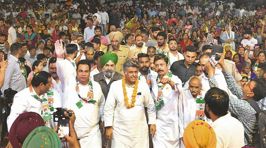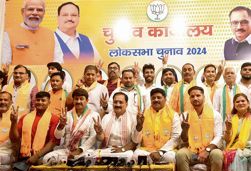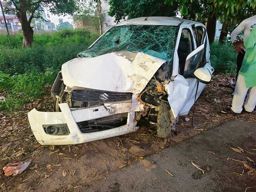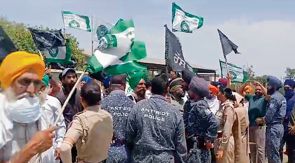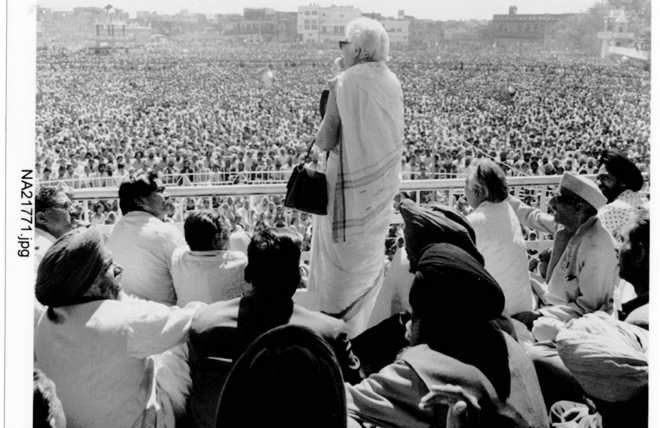
An election rally in Ludhiana photo courtesy: PIB
Chandigarh, December 11, 2016
Waves rise...and fall. The ‘Indira wave’ made the Congress crest to an absolute majority in the 1972 elections in Punjab. The euphoria that propelled the Congress to power did not last long and by the time the polls were announced in 1977, the imposition of the Emergency had left a very bitter taste in citizens’ mouth. The voters felt the need to assert their democratic rights. Under the leadership of Sant Harchand Singh Longowal, the Akali Dal had led a sustained protest campaign against the Emergency, with 43,000 of its cadre courting arrest till elections were announced. It was the only political party in the country to do so. It was the only political party in the country to do so.
The Janata Party, with the Jana Sangh as one of its constituents, emerged as a powerful grouping and it won the elections. It formed a government at the Centre, with Prime Minister Morarji Desai at its helm in May. Parkash Singh Badal was the Union Minister of Agriculture and Irrigation in this Cabinet.
Part VI Election series : Punjab Assembly Elections — 1977
- Anti-Emergency wave drowns Congress
- Badal Sworn In As Chief Minister
- 15 Punjab Ministers Sworn In
- PLUMS OF OFFICE-Editorial on June 28, 1977
- Haryana, Punjab to go to polls on June 12
- Zail Singh not to contest
- Mrs. Gandhi Not to Go Campaigning
- Ignoring Of Women In Punjab List Regrettable -CHANDRA SHEKHAR
- Punjab To Have Over 9,200 Polling Stations
- Akali Bid to win over Independents
- Results on June 14
- Polling In Low Key In Punjab
- Punjab goes to poll today
- Badal Outlines Austerity Steps
- Akalis On Verge Of Absolute Majority
The 10 states, including Punjab, where Congress was in power were then pressurised to hold mid-term polls. The North was still in no mood to forgive or forget the Emergency. In Punjab, the number of seats in the Assembly had increased to 117 following the 1971 census. The Akali Dal strengthened its position by forging an alliance with the Janata Party and the CPI (M), winning handsomely. It won 58 seats, as compared to 24 earlier, whereas the Congress' share came down from 66 to a meagre 17. Parkash Singh Badal was brought back as Chief Minister and he was sworn in on June 20, 1977. Surjit Singh Barnala became Union Minister of Agriculture and Irrigation. The new CM promised “to restore the balance of the administrative structure by drastically reducing top-heavy posts.”
The Centralisation of power during the Emergency had to be rolled back. The federal principle had to be restated and revisited. In Punjab, the Akali Dal produced became the Anandpur Sahib Resolution, which demanded more autonomy for the state and other things, including Chandigarh. This would contribute to the strain between the coalition partners in Punjab.























